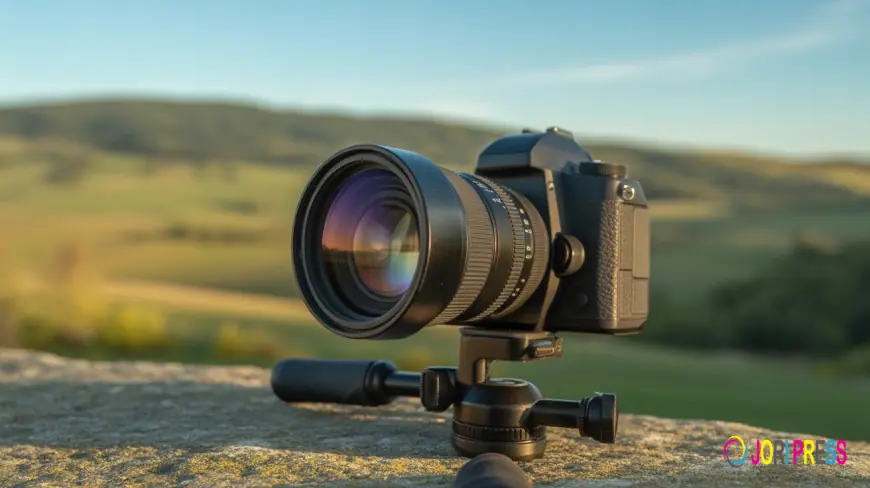5 Common Mistakes to Avoid When Using Variable ND Filters
A variable ND filter helps balance exposure when shooting in bright conditions, giving you more control over your shutter speed and aperture.

Photography often comes down to controlling light — too much or too little can completely change your shot. A variable ND filter helps balance exposure when shooting in bright conditions, giving you more control over your shutter speed and aperture. However, many photographers unknowingly make small mistakes that affect image quality. If you’re using an ND filter or planning to buy one, understanding these common errors will save you time and frustration.
At Kenko Tokina, we’ve seen how even experienced photographers can face issues when using a variable ND filter incorrectly. Here are 5 mistakes you should avoid to get the best results from your equipment.
1. Using the Filter at Its Maximum Range
Every variable ND filter has a limit. When you rotate it to the darkest setting, you might notice strange patterns, uneven exposure, or even a visible “X” shape across the image. This happens because the two polarized elements inside the filter cross each other beyond the effective range.
Try keeping your filter within its optimal adjustment range. Instead of forcing maximum darkness, lower your ISO or adjust your aperture slightly. Quality filters like those from Kenko Tokina are designed to minimize these issues, but staying within the recommended range always produces cleaner shots.
2. Ignoring Lens Compatibility
Not all ND filters fit every lens perfectly. Some photographers pick a single size and use step-up or step-down rings for convenience. While that works, it can also cause vignetting (dark corners) if the filter is smaller than your lens diameter.
Always match the filter size with your lens. If you shoot with multiple lenses, consider buying a variable ND filter for your most frequently used one, or use high-quality adapter rings that maintain optical clarity. Taking time to ensure compatibility helps keep your images sharp & evenly exposed.
3. Overlooking Color Casts
Many beginners notice that their photos look slightly warm or cool after using an ND filter, especially cheaper ones. This is known as a color cast and often results from the filter glass not being completely neutral.
To fix this, you can manually correct the white balance in your camera or during post-processing. However, investing in a premium variable ND filter like the ones from Kenko Tokina reduces this issue dramatically. Our filters are designed to maintain true-to-life colors even under strong sunlight, making them ideal for both photographers & videographers.
4. Forgetting to Clean the Filter Regularly
Smudges, fingerprints, and dust particles can easily affect image clarity. Many people clean their lenses regularly but forget about the filter on the front. A dirty ND filter can lower contrast, reduce sharpness, and cause light flares — especially when shooting against the sun.
Always carry a microfiber cloth or a small cleaning kit in your camera bag. A quick wipe before each session keeps your variable ND filter in perfect condition. Clean optics equal clean images — it’s as simple as that.
5. Relying Only on the Filter for Exposure Control
A variable ND filter is a great tool, but it’s not the only way to manage exposure. Some photographers rotate it constantly instead of adjusting camera settings. That habit can make you dependent on the filter alone, limiting your creative options.
Balance is the key — use your ND filter along with proper camera settings. Adjust shutter speed, aperture, and ISO together for the best exposure results. Think of the filter as your assistant, not your automatic solution. When used smartly, you’ll achieve smooth motion blur, balanced highlights, and natural depth in your photos.
Final Thoughts
Using a variable ND filter correctly can make a noticeable difference in your photography. It gives you freedom to shoot wide open in bright light, create soft water effects, or record cinematic videos without overexposure. Avoiding small mistakes like using the filter beyond its range or forgetting to clean it will help you get more consistent and professional results.
At Kenko Tokina, we focus on helping creators capture images exactly as they imagine. Our ND filters and variable ND filters are crafted with precision optics that deliver clarity, color accuracy & reliability in every frame.
So next time you step out for a shoot, take a moment to check your settings, clean your gear, and handle your filter carefully — your photos will thank you for it.
What's Your Reaction?
 Like
0
Like
0
 Dislike
0
Dislike
0
 Love
0
Love
0
 Funny
0
Funny
0
 Angry
0
Angry
0
 Sad
0
Sad
0
 Wow
0
Wow
0








![Introduction ?98~[(2121)]?~[{0875}] to the stock market course](https://joripress.com/uploads/images/202509/image_430x256_68bfbfdebfba4.webp)







































